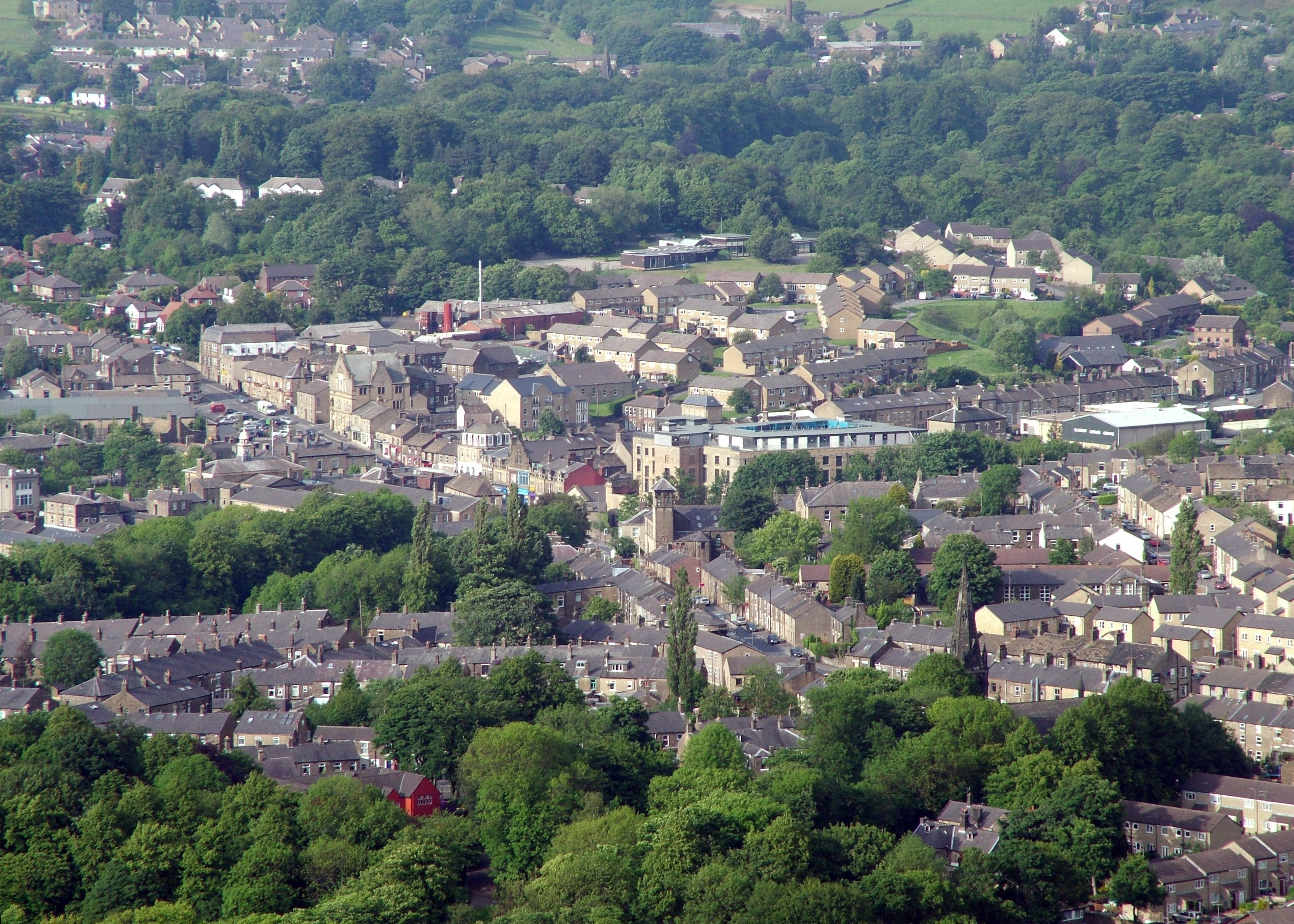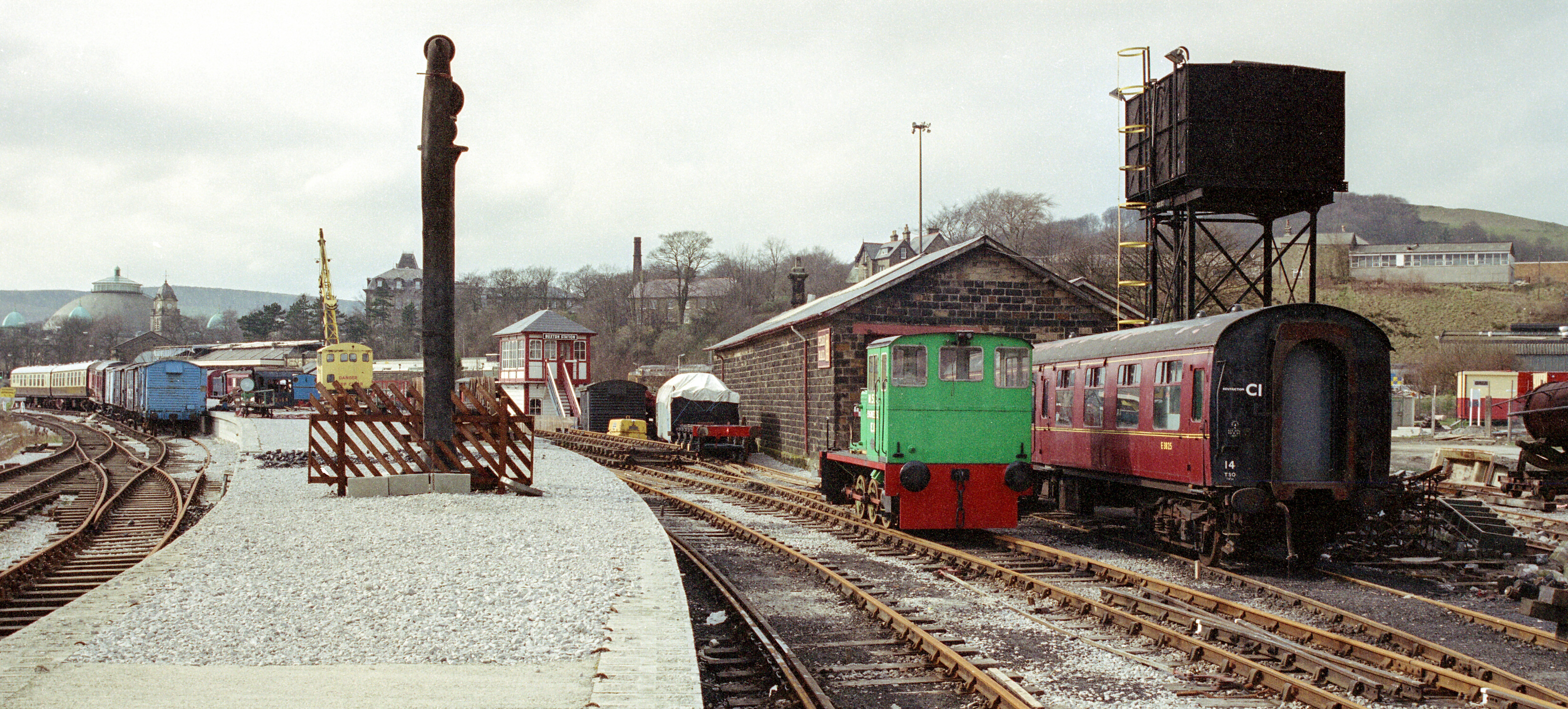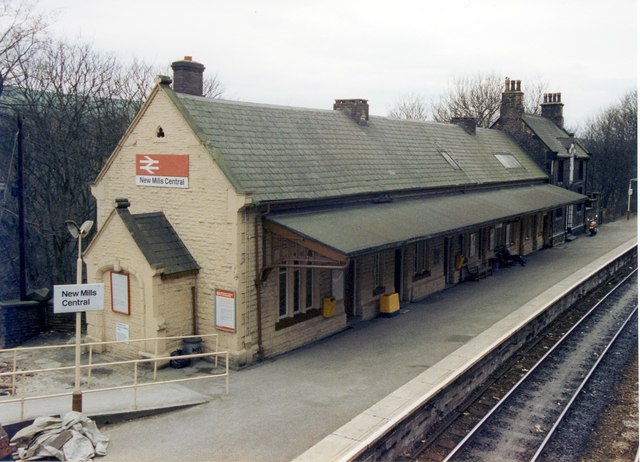|
Buxworth Railway Station
Buxworth railway station was an intermediate stop on the Derby–Manchester line of the Midland Railway. It was open between 1867 and 1958. History The Midland Railway (MR) had reached Buxton in 1863. Their next objective was Manchester and, to reach that city, they entered into cooperation with the Manchester, Sheffield and Lincolnshire Railway. The two companies would share a line between Manchester and New Mills, whilst the MR would build its own line between there and , on its Buxton line. The line opened for passenger trains on 1 February 1867 (goods trains already having run for several months). The station at Bugsworth also opened on 1 February 1867. The station was renamed Buxworth on 4 June 1930. It closed on 15 September 1958. In 1969 it was bought by Burnage High School in Manchester and was converted for use as an outdoor education Outdoor education is organized learning that takes place in the outdoors. Outdoor education programs sometimes involve residential or ... [...More Info...] [...Related Items...] OR: [Wikipedia] [Google] [Baidu] |
Buxworth
Buxworth is a village in the High Peak of Derbyshire, England. The area, which was once an important centre for the limestone industry, became the terminus of the Peak Forest Canal. Its pub, the Navigation Inn, was once owned by ''Coronation Street'' actress Pat Phoenix. The village lies almost from Whaley Bridge and about southeast of Manchester. Name change The village was originally called Bugsworth, from the Old English ''Bucga's Worth'' ("Bucga's Enclosure"), but in the early 20th century some residents began to dislike the name of their village; their cause was championed by the local vicar, Dr J R Towers, and the village school headmaster, Mr W T Prescott. As a result of the efforts of these two residents, Bugsworth officially became Buxworth on 16 April 1930. In 1999 the local High Peak Borough Council spent £350 to organise a ballot of the 600 members of the local population. The result was 233 to 139 to keep the name as Buxworth. However, the village is still ge ... [...More Info...] [...Related Items...] OR: [Wikipedia] [Google] [Baidu] |
High Peak, Derbyshire
High Peak is a local government district with borough status in Derbyshire, England. The borough compromises high moorland plateau in the Dark Peak area of the Peak District National Park. The district stretches from Holme Moss in the north to Sterndale Moor in the south, and from Hague Bar in the west to Bamford in the east. The population of the borough taken at the 2011 Census was 90,892. The borough is unusual in having two administrative centres for its council, High Peak Borough Council; the offices are based in both Buxton and Glossop. The borough also contains other towns including Chapel-en-le-Frith, Hadfield, New Mills and Whaley Bridge. High Peak was the name of a hundred of the ancient county of Derbyshire covering roughly the same area as the current district. It may have derived its name from the ancient Forest of High Peak, a royal hunting reserve administered by William Peverel, a favourite of William I, who was based at Peak Castle. High Peak contains much ... [...More Info...] [...Related Items...] OR: [Wikipedia] [Google] [Baidu] |
Ordnance Survey National Grid
The Ordnance Survey National Grid reference system (OSGB) (also known as British National Grid (BNG)) is a system of geographic grid references used in Great Britain, distinct from latitude and longitude. The Ordnance Survey (OS) devised the national grid reference system, and it is heavily used in their survey data, and in maps based on those surveys, whether published by the Ordnance Survey or by commercial map producers. Grid references are also commonly quoted in other publications and data sources, such as guide books and government planning documents. A number of different systems exist that can provide grid references for locations within the British Isles: this article describes the system created solely for Great Britain and its outlying islands (including the Isle of Man); the Irish grid reference system was a similar system created by the Ordnance Survey of Ireland and the Ordnance Survey of Northern Ireland for the island of Ireland. The Universal Transverse Merca ... [...More Info...] [...Related Items...] OR: [Wikipedia] [Google] [Baidu] |
Midland Railway
The Midland Railway (MR) was a railway company in the United Kingdom from 1844. The Midland was one of the largest railway companies in Britain in the early 20th century, and the largest employer in Derby, where it had its headquarters. It amalgamated with several other railways to create the London, Midland and Scottish Railway at grouping in 1922. The Midland had a large network of lines emanating from Derby, stretching to London St Pancras, Manchester, Carlisle, Birmingham, and the South West. It expanded as much through acquisitions as by building its own lines. It also operated ships from Heysham in Lancashire to Douglas and Belfast. A large amount of the Midland's infrastructure remains in use and visible, such as the Midland main line and the Settle–Carlisle line, and some of its railway hotels still bear the name '' Midland Hotel''. History Origins The Midland Railway originated from 1832 in Leicestershire / Nottinghamshire, with the purpose of serving the needs o ... [...More Info...] [...Related Items...] OR: [Wikipedia] [Google] [Baidu] |
London, Midland And Scottish Railway
The London, Midland and Scottish Railway (LMSIt has been argued that the initials LMSR should be used to be consistent with LNER, GWR and SR. The London, Midland and Scottish Railway's corporate image used LMS, and this is what is generally used in historical circles. The LMS occasionally also used the initials LM&SR. For consistency, this article uses the initials LMS.) was a British railway company. It was formed on 1 January 1923 under the Railways Act of 1921, which required the grouping of over 120 separate railways into four. The companies merged into the LMS included the London and North Western Railway, Midland Railway, the Lancashire and Yorkshire Railway (which had previously merged with the London and North Western Railway on 1 January 1922), several Scottish railway companies (including the Caledonian Railway), and numerous other, smaller ventures. Besides being the world's largest transport organisation, the company was also the largest commercial enterprise ... [...More Info...] [...Related Items...] OR: [Wikipedia] [Google] [Baidu] |
Buxton (Midland) Railway Station
Buxton (Midland) railway station served the town of Buxton, Derbyshire, England between 1863 and 1967. History The station was opened by the Midland Railway (MR) on 1 June 1863. It was adjacent to, and to the south-east of, the Buxton railway station of the Stockport, Disley and Whaley Bridge Railway, which opened two weeks later. The two stations had similar end walls incorporating a large fan-shaped window. The station was the terminus of the MR route from Derby. This route had opened as far as on 4 June 1849; and was continued to Buxton in 1863. The station was from . The station closed on 6 March 1967. Most of the station was subsequently demolished and the land used for a ring road. Part of the site including the trackbed of the tracks outside the station were occupied by the Buxton Steam Centre of the Peak Rail Peak Rail is a preserved railway in Derbyshire, England, which operates a steam and heritage diesel service for tourists and visitors to both the Peak Di ... [...More Info...] [...Related Items...] OR: [Wikipedia] [Google] [Baidu] |
Manchester
Manchester () is a city in Greater Manchester, England. It had a population of 552,000 in 2021. It is bordered by the Cheshire Plain to the south, the Pennines to the north and east, and the neighbouring city of Salford to the west. The two cities and the surrounding towns form one of the United Kingdom's most populous conurbations, the Greater Manchester Built-up Area, which has a population of 2.87 million. The history of Manchester began with the civilian settlement associated with the Roman fort ('' castra'') of ''Mamucium'' or ''Mancunium'', established in about AD 79 on a sandstone bluff near the confluence of the rivers Medlock and Irwell. Historically part of Lancashire, areas of Cheshire south of the River Mersey were incorporated into Manchester in the 20th century, including Wythenshawe in 1931. Throughout the Middle Ages Manchester remained a manorial township, but began to expand "at an astonishing rate" around the turn of the 19th century. Manchest ... [...More Info...] [...Related Items...] OR: [Wikipedia] [Google] [Baidu] |
Manchester, Sheffield And Lincolnshire Railway
The Manchester, Sheffield and Lincolnshire Railway (MS&LR) was formed in 1847 when the Sheffield, Ashton-under-Lyne and Manchester Railway joined with authorised but unbuilt railway companies, forming a proposed network from Manchester to Grimsby. It pursued a policy of expanding its area of influence, especially in reaching west to Liverpool, which it ultimately did through the medium of the Cheshire Lines Committee network in joint partnership with the Great Northern Railway and the Midland Railway. Its dominant traffic was minerals, chiefly coal, and the main market was in London and the south of England. It was dependent on other lines to convey traffic southward. The London and North Western Railway was an exceptionally hostile partner, and in later years the MS&LR allied itself with the Great Northern Railway. Passenger traffic, especially around Manchester, was also an important business area, and well-patronised express trains to London were run in collaboration with th ... [...More Info...] [...Related Items...] OR: [Wikipedia] [Google] [Baidu] |
New Mills Central Railway Station
New Mills Central railway station serves the town of New Mills in Derbyshire, England. It is on the Hope Valley Line between Manchester Piccadilly and Sheffield, east of the former. The town is also served by New Mills Newtown station, which is on the Buxton to Stockport and Manchester line. History In the mid-19th century, the Manchester, Buxton, Matlock and Midlands Junction Railway ran as far as Rowsley and was extended by the Midland Railway to Buxton, in its aim to run as far as Manchester. The Manchester, Sheffield & Lincolnshire Railway also wished to extend southwards from its main line through Woodhead Tunnel to Sheffield and had built a branch to Hyde. Meanwhile, the London and North Western Railway had constructed their own line to Buxton from Whaley Bridge, with a station at Newtown, which effectively blocked the other two. An agreement was reached whereby the MS&LR would build their proposed "Marple, New Mills and Hayfield Junction Railway", while the Midlan ... [...More Info...] [...Related Items...] OR: [Wikipedia] [Google] [Baidu] |
Ian Allan Publishing
Ian Allan Publishing was an English publisher, established in 1942, which specialised in transport books. It was founded by Ian Allan. In 1942 Ian Allan, then working in the public relations department for the Southern Railway at Waterloo station, decided he could deal with many of the requests he received about rolling stock by collecting the information into a book. The result was his first book, ''ABC of Southern Locomotives''. This proved to be a success, contributing to the emergence of trainspotting as a popular hobby in the UK, and leading to the formation of the company.Ian Allan…the man who launched a million locospotters ''The Railway Magazine'' issue 1174 February 1999 pages 20-27 The company grew from a small producer of books for train enthusiasts and spotters to a large transport publisher. Each year it published books covering subjects such as military and civil aviation, naval and maritime topics, buses, trams, trolleybuses and steam railways, including hi ... [...More Info...] [...Related Items...] OR: [Wikipedia] [Google] [Baidu] |
Burnage High School
Burnage Academy for Boys, formerly known as Burnage High School for Boys, is a secondary school with academy status, located in Burnage, Manchester, England. History Grammar school The school was founded in September 1932 as Burnage High School on its current site on Burnage Lane. At an ceremony on 21 October 1932, the school was officially opened by Sir Boyd Merriman and the school choir performed Edvard Grieg's "Song of Olav Trygvason". In the early years, the school was organised around the house system, sports teams were formed and a school magazine was printed. A number of school plays were staged, including ''Ambrose Applejohn's Adventure'', '' Dr. Knock'', '' Seven Keys to Baldpate'' and '' The Anatomist'', nurturing young acting talent such as that of Alan Badel, who later went on to appear on stage, film and television. Upon the outbreak of World War II in 1939, most pupils were evacuated to towns outside Manchester to avoid the hazards of bombing, and Burnage boys ... [...More Info...] [...Related Items...] OR: [Wikipedia] [Google] [Baidu] |
Outdoor Education
Outdoor education is organized learning that takes place in the outdoors. Outdoor education programs sometimes involve residential or journey wilderness-based experiences in which students participate in a variety of adventurous challenges and outdoor activities such as hiking, climbing, canoeing, ropes courses and group games. Outdoor education draws upon the philosophy, theory, and practices of experiential education and environmental education. Scope Outdoor education has diverse goals and practices, but always involves learning about, in, and through the outdoors. Definitions Outdoor education can be simply defined as ''experiential learning in, for, or about the outdoors''. The term 'outdoor education', however, is used broadly to refer to a range of organized activities that take place in a variety of ways in predominantly outdoor environments. Common definitions of outdoor education are difficult to achieve because interpretations vary according to culture, philosophy, ... [...More Info...] [...Related Items...] OR: [Wikipedia] [Google] [Baidu] |










